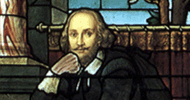

 |
 |
| Authorship | The Playhouse in Printing House | Publishers, Printers, and the Printed Book | ||||||||||||
| The Playhouse in Printing House | |||
| Actor Lists | ||
|
Ben Jonson agreed with Thomas Bodley's opinion that most plays were "riffe raffes," but he saw his own plays as the exception that proved the rule. Jonson was the early modern playwright most self-conscious of his own literary merit and ambition. For example, he was the first playwright designated an "Author" on a play title page (on Every Man Out of His Humor in 1600, which was also the first play to carry his name), and the only one to be labeled an "Author" until 1633. One of the ways in which Jonson attempted to make his printed plays more "literary" was by adding short paragraphs describing the characters in them. As a result, he turned what were originally roles for actors into literary characters for readers. The first editions of Every Man Out of His Humor possess such lists, as does the version printed in Jonson's Workes (1616). In the early seventeenth century, more and more printed plays named the "actors"-the term actor referred both to characters and players-who performed in them, though few with the elaborate character descriptions Jonson provided. Ford's 'Tis Pity She's a Whore (1633) and Thomas May's The Old Couple (1658) both list the "Actors Names," separating the "Actors" from the "Woemen" or "Women Actors." |
Images: Columbia
Rare Book & Manuscript Library
Technology: Columbia Center for New
Media Teaching & Learning